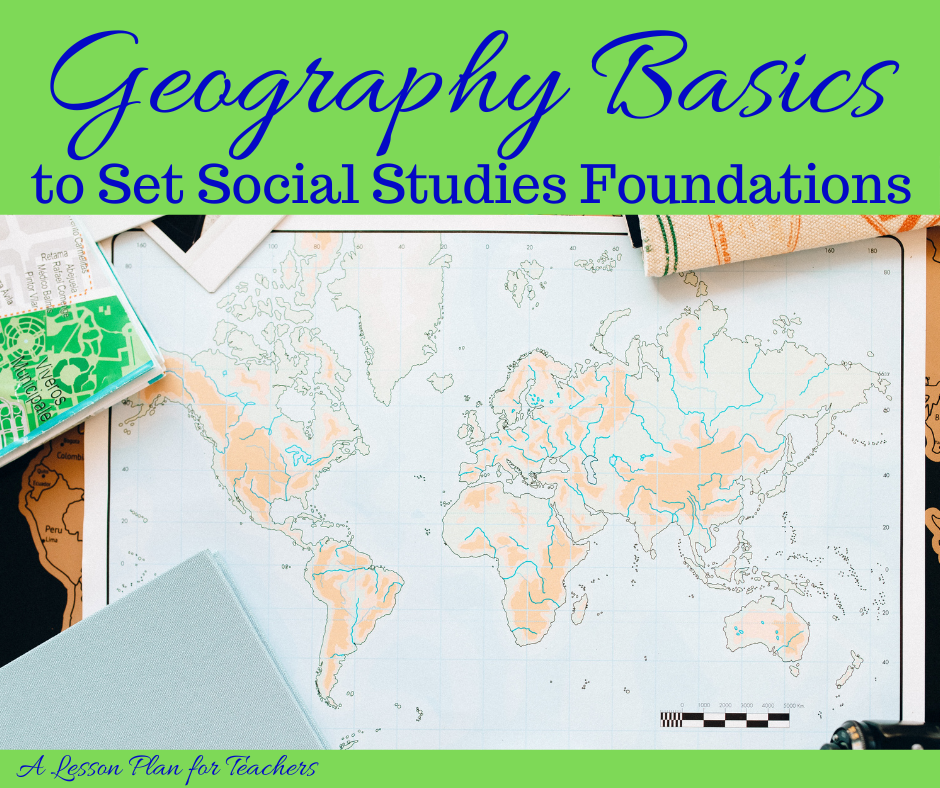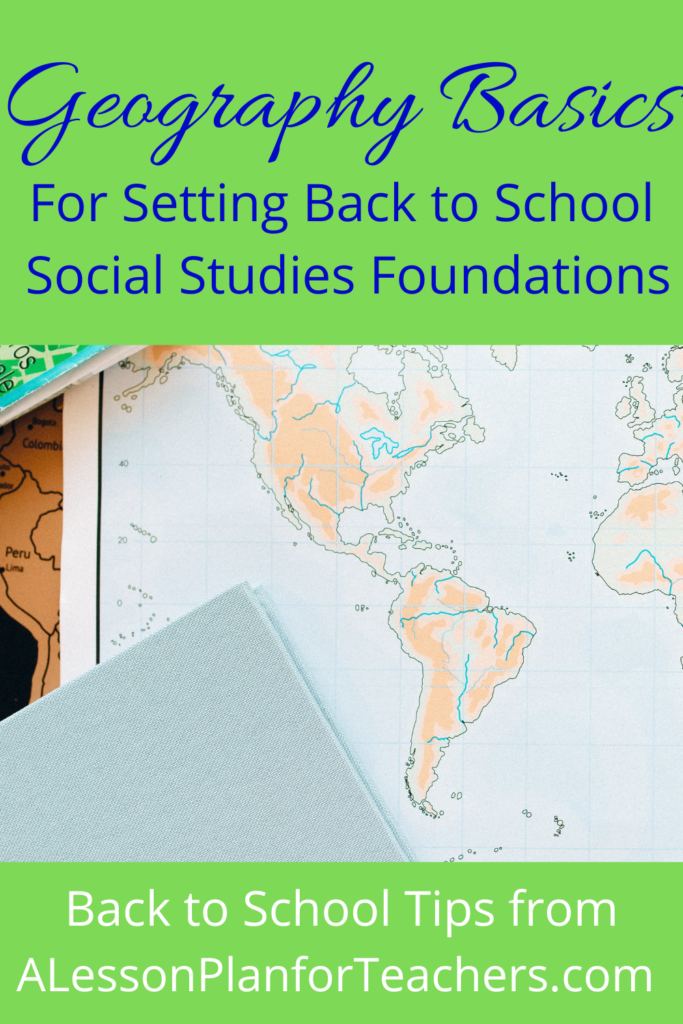Geography tends to be the place where Social Studies classes start. Diving into deeper, heavier concepts requires a foundational understanding for students to really grasp the topic. Starting with the foundational approach of teaching geography basics will set students up for success. They will be better prepared for their journey through history.

Teaching Geography Basics with the Five Themes
| Location | Knowing where a place is helps students make connections between events. |
| Place | Place is the description of a location. Students need to understand this aspect of geography to understand the cultural implications that bring change though time. |
| Human/ Environment Interaction | This is simply how humans interact with the Earth, whether positively or negatively. In modern times, this category not only helps students better understand history but also current events. |
| Movement | Movement is the shifting of people, ideas, and things which is fundamental for understanding historic topics and how the world has evolved. |
| Regions | Regions help us to teach compare and contrast within the Social Studies setting to help students better formulate conclusions about historic events. |
If you need a resource that teaches the Five Themes, try this Five Themes Centers activity.
Mapping Skills for Teaching Geography Basics
Mapping skills are not only vital to help your students better succeed in your history class, but they also help them learn to navigate our world and to make hand-eye connections to their whereabouts. Start off each unit with a mapping activity to help students orient to the location and place they will learn about in the lessons. Mapping activities can also help connect places with one another as well as examine changes over time in locations or regions. If you need step-by-step guides to mapping your historical units, check out these Mapping History resources.
Teaching Culture Through a Geographic Perspective
One of the most important geographic lessons that we can teach is about culture. This includes the acceptance of cultures different than our own. When we teach place, we address cultures, but we should also be working hard to highlight the variations that exist within mono-based cultures.
Movement as a Foundation for History
As students learn about the changes over time, they should also see how those changes move from one location in the world to others. Nothing in history is stagnant. By teaching movement as one of the key geography basics to introduce lessons, you can shift the focus to how movement affects the other five themes.
Regional Studies in History Classes
Regional comparisons matter in the history classroom. We should not only be teaching the similarities but also the differences between regions. Focus on the impact those similarities or differences have on historic events and facts. We need to be wary as teachers about teaching as “prescribed” by legislatures. New courses that focus only on one region or another do not make the connections students need to understand the evolution of world history.

No matter how you choose to teach Geography Basics, it is important to do so early and often. These basics are the foundation for Social Studies learning, and teaching them effectively can ensure students will have the understanding needed to further their journey in history.
Happy Teaching!
